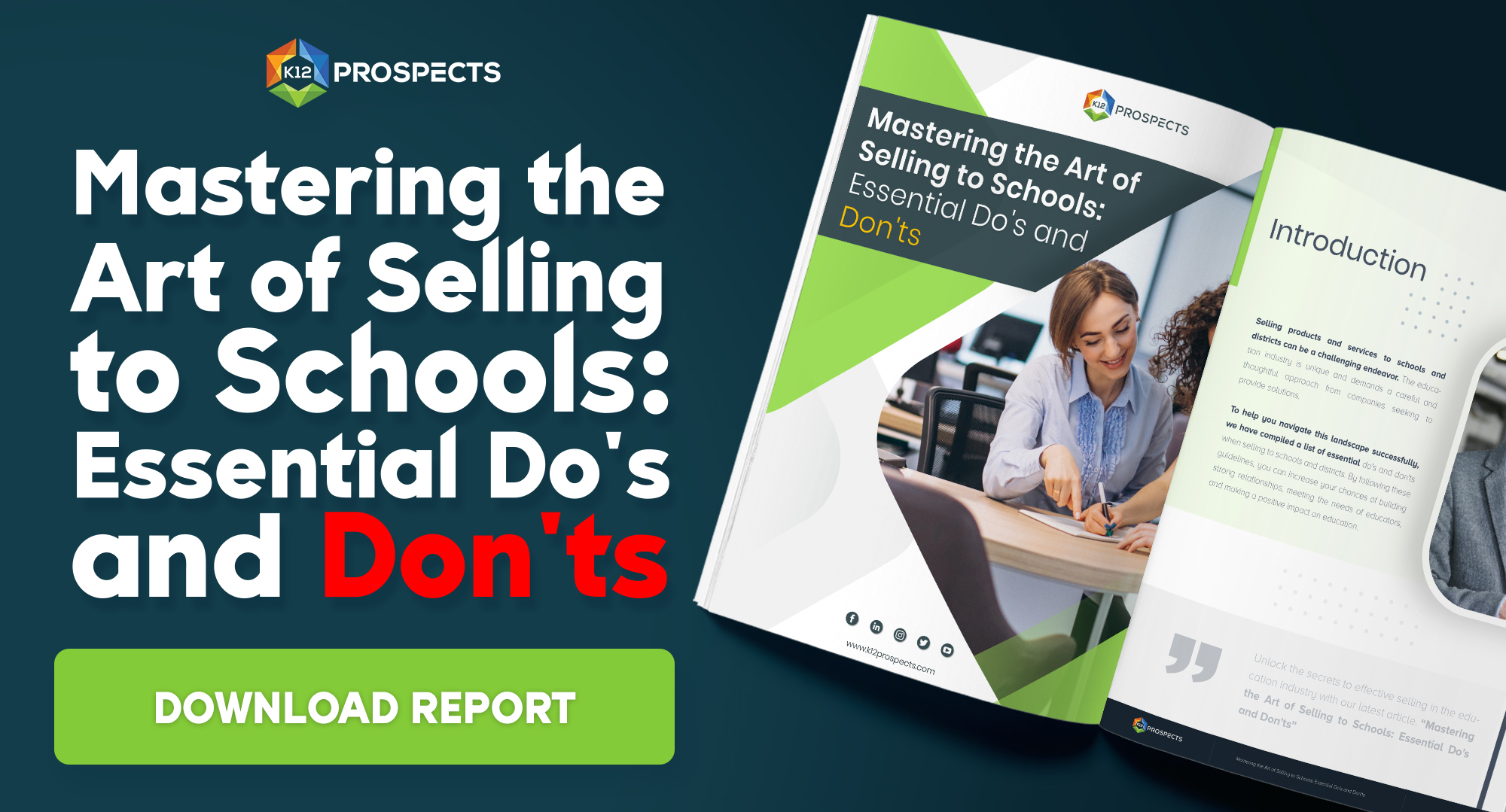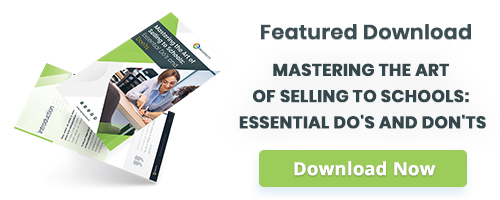The Art of Selling to Schools: Overcoming the Decision-Making Dilemma

Engaging with school districts and educators isn’t always straightforward. The landscape is filled with various products and platforms, each clamoring to be noticed. This piece offers a beacon, shedding light on how to truly resonate with your audience and save you from endless guessing games. Let’s dive in and discover the art of effective communication in the education sector.
Selling to Schools: Two Big Hurdles
The Who-Uses vs. Who-Buys Problem
Imagine this: Students and teachers find a cool tool they really like. They chat about it, eager to use it. But there’s a catch! They don’t get to decide what the school buys. That’s up to the administrators. So, if you’re selling, your job is to impress these big bosses without forgetting what the teachers and students want.
Earning Trust from the Top
Now, school leaders aren’t just about buying stuff. They care deeply about making school better. Many were once teachers and want only the best for students. When selling to them, it’s like making a new friend. You have to show them that what you’re offering isn’t just cool, but truly good for their school.
To successfully market your EdTech or SaaS solution to school districts and teachers, you must grasp their unique requirements and challenges.
Step 1 – Recognize the primary influencers and decision-makers in the educational entity.
Step 2 – Evaluate their requirements considering their financial constraints, tech foundations, and student profiles.
Step 3 – Thoroughly study your intended audience, tailoring your promotional efforts to meet their specific concerns.
Different stakeholders like teachers and administrators might overlap in concerns, but they view things through unique lenses.
Consider this:
Teachers look beyond mere test scores, emphasizing their potential mismatches with a student’s true abilities or teaching efficacy.
To resonate with teachers, highlight how your initiatives optimize classroom dynamics, maybe by enhancing learning or streamlining processes.
On the flip side, when talking to administrators, pivot your emphasis. Spotlight how your solutions directly uplift students and deliver tangible outcomes.
By tuning into each group’s distinct priorities, you can craft messages that truly resonate, addressing core concerns and aligning with collective goals.
1. Address Several Challenges
In a school setting, it’s like identifying areas of improvement on a school map. Often, multiple departments or grades may need attention because challenges can be linked, much like a “web of issues” in education. This perspective is crucial for school and district planning. To make a meaningful difference, address various challenges. Propose strategies that cater to multiple areas, ensuring the school community sees a clear, positive shift.
Many of K12 Prospects’ clients boast team members with a rich background of 20-25 years as educators and school leaders. Such experience naturally facilitates stronger connections with current school decision-makers.
School decision-makers deeply value firsthand insights in product creation. Consider an interaction with an administrator discussing the balance between technology and traditional teaching. His insights affirmed a profound understanding of modern educational challenges.
In product development, genuine on-ground educational experience is essential. These leaders, who’ve navigated educational intricacies and adopted diverse teaching methods, offer invaluable insights.
Beyond curriculum formulation, they understand the challenges educators face. Teams with such experiences craft the most effective educational tools. To truly grasp user needs, direct engagement with on-ground educational experts is crucial.
2. Build Genuine Connections
Begin by nurturing authentic relationships. This will bolster your credibility and broaden your influence. First, pinpoint the key figures who oversee purchasing within schools or educational bodies. This might encompass superintendents, school heads, tech leads, curriculum champions, among others. Understanding their duties will refine your communication strategy.
Upon recognizing your targets, it’s time to connect!
Engage at Industry Gatherings
Conference and EdTech events are not just about catching the latest trends but also about fostering relationships with potential stakeholders. By attending, you position yourself to interact with school decision-makers, offering a direct platform to highlight your product’s advantages.
Insider’s tip: Informal sessions, like dinners, often set the stage for the most fruitful conversations. It’s here, amidst relaxed vibes, that lasting impressions are made. A sale might not materialize instantly. Focus instead on fostering genuine connections. A familiar face at recurring events can pave the way for memorable conversations like, “Ah, you’re the one with the revolutionary math tool!”
Assess Implementation Ease
Consider the adaptation hurdles your product might present to schools. Urging an institution to overhaul their textbook selection for your offering demands substantial trust-building. On the other hand, proposing an affordable supplemental tool presents fewer challenges and can be more readily adopted. The product’s essence will guide the depth of trust you need to cultivate over time.
Maximize Email Marketing
While in-person interactions have their value, many of us can’t be present at every event. That’s where platforms like K12 Prospects come into play. They provide pivotal data to connect with education professionals, especially those who shape purchasing decisions in schools and districts nationwide. Harness this channel effectively by disseminating content that showcases your expertise in education topics.
Show Authentic Concern for Their Needs and Obstacles
Engage Actively: When participating in online conversations with educators or administrators, listen intently. Pose questions that underline your sincere eagerness to grasp their requirements.
Exhibit Empathy: Recognize the hurdles they encounter and genuinely convey your aspiration to assist them with your offerings.
Provide Meaningful Information: Present pertinent research, case studies, or feedback that illustrate how your solution can cater to their unique challenges.
Building rapport online may pose challenges, but never let that deter your efforts!
3. Harness Product-Centric Content to Spark Engaging Dialogues and Quality Leads
A plethora of leads can seem promising, yet it’s their caliber that truly counts.
Cultivating authentic interest in your brand—where its essence is unmistakably grasped—is paramount.
Amidst an era where administrators are flooded with numerous unsolicited emails, product-centric content emerges as a beacon.
Desire educators and decision-makers to actively seek you? Keen for them to resonate with your solutions?
Such content positions you as a magnet, drawing prospects organically, thus allowing you to invest time where it truly matters.
Understanding Product-Centric Content
Product-centric content seamlessly merges the intricacies of a product with the distinct needs and challenges of the customer. For EdTech firms, this translates to crafting content that aids students, educators, and institutions in surmounting educational hurdles, demonstrating how the product enriches the learning journey.
Crafting Effective EdTech Content
While many equate success in EdTech to test score improvements, the spectrum of solutions is broad. To bolster your sales:
Evaluate Through Surveys: Beyond test scores, gauge your product’s efficacy through post-implementation surveys. These insights help understand user experience and engagement.
Merge Data with Stories: Quantitative data gets amplified when coupled with real testimonials. Sharing experiences of teachers, principals, and superintendents adds depth and credibility.
Diverse Testimonials: As you grow, capture varied testimonials, from grassroots educators to top-tier decision-makers, amplifying the authenticity of your success.
Trust and credibility remain the cornerstone for selling to educational entities.
4. Enhancing Your Pitch
EdTech has long promised a revolution, yet here we are, amidst a cacophony of promises. To stand out, weave your authentic narrative. Share personal experiences, like a teacher’s challenging first year, making you relatable and emphasizing your genuine intent. Reiterate that your drive isn’t just to sell but to truly alleviate educators’ challenges and partner for lasting impact.
Showcase Real-world Successes
Illustrate your product’s efficacy with success stories from schools that have benefited. By highlighting specific achievements like enhanced test scores or heightened student engagement, you provide decision-makers a vivid blueprint of potential outcomes for their institutions.
Highlight Evidence of Your Impact
Contextualize your data. Begin by showcasing historical data from a specific region, like Florida or Alabama, to set the stage. Compare their performance against the state average, offering a buffer if they’re underperforming. Introduce data from schools using your product, emphasizing tangible improvements. This approach reinforces that you understand the challenge, have a solution, and possess a roadmap to bridge any gaps.
5. Tips to Attract the K-12 Education Market for Advertisers
To truly shine in the bustling arena of K12 market, understanding what attracts educational institutions is vital. Here’s a streamlined guide to appeal to the K-12 school and district decision-makers.
Stand Out with Incentives:
Every school and teacher is looking for the best deal. Offering special incentives can make your product more appealing.
Bulk Discounts: Schools often buy multiple licenses. By offering discounts for larger orders, you not only boost your sales but also make institutions feel valued. In fact, many big companies emphasizes the value of using bulk orders for better negotiations.
Free Trials: Allowing schools to test your product without a financial commitment can sway their decision in your favor. Consider pilot programs that let select schools experience new features first. This dual benefit allows you to gather feedback and gives the schools a sense of being part of an exclusive club.
Early Bird Offers: Limited-time promotions, such as discounts during launch or bonus features for early subscribers, can urge schools to act swiftly.
Forge Partnerships: Aligning with educational organizations can be a game-changer. By partnering, you can introduce exclusive discounts, resources, or training programs. Such collaborations not only uplift your product’s image but also cement your position as a trusted entity in the education sector.
If you’ve diligently applied these strategies, it’s likely you’ve garnered new contracts and clientele – a job well done! As a next step, consider strategies to monitor their performance, equipping you with even more insights for future engagements.
Unlock the secrets to effectively resonate with K-12 decision-makers and schools. Dive into our guide for meaningful connections and impactful school partnerships. Discover how K12 Prospects can empower your outreach and elevate your success.



